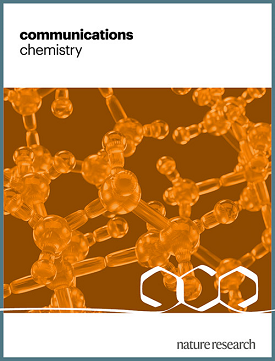离子通道门控实时马尔可夫建模的深度学习方法。
IF 5.9
2区 化学
Q1 CHEMISTRY, MULTIDISCIPLINARY
引用次数: 0
摘要
膜片钳技术使我们能够以前所未有的时间分辨率窃听单个离子通道的门控行为。当通道蛋白在导电和非导电状态之间快速转换时,其构象变化产生了信号。然而,考虑到不经意的低信噪比以及低通滤波引起的信号失真,单通道数据集的明确分析是具有挑战性的。离子通道动力学通常使用隐马尔可夫模型(HMM)来描述,该模型可以得出蛋白质内部工作原理的结论。在这项研究中,我们提出了一种从单通道录音中提取模型的深度学习方法。从理想化的时间序列中计算二维驻留时间直方图,然后通过在模拟数据集上训练的两个神经网络进行分析,以确定HMM的拓扑结构和转移率。我们证明了该方法对于噪声和门控事件的鲁棒性,超出了低通滤波器的拐角频率。此外,我们还提出了一种通过重新模拟预测来评估预测模型优劣的方法。最后,我们用记录在膜片钳装置上的数据测试了该算法。原则上,它可以满足在正在进行的记录会话中实时提取模型的要求。本文章由计算机程序翻译,如有差异,请以英文原文为准。

A deep learning approach to real-time Markov modeling of ion channel gating
The patch-clamp technique allows us to eavesdrop the gating behavior of individual ion channels with unprecedented temporal resolution. The signals arise from conformational changes of the channel protein as it makes rapid transitions between conducting and non-conducting states. However, unambiguous analysis of single-channel datasets is challenging given the inadvertently low signal-to-noise ratio as well as signal distortions caused by low-pass filtering. Ion channel kinetics are typically described using hidden Markov models (HMM), which allow conclusions on the inner workings of the protein. In this study, we present a Deep Learning approach for extracting models from single-channel recordings. Two-dimensional dwell-time histograms are computed from the idealized time series and are subsequently analyzed by two neural networks, that have been trained on simulated datasets, to determine the topology and the transition rates of the HMM. We show that this method is robust regarding noise and gating events beyond the corner frequency of the low-pass filter. In addition, we propose a method to evaluate the goodness of a predicted model by re-simulating the prediction. Finally, we tested the algorithm with data recorded on a patch-clamp setup. In principle, it meets the requirements for model extraction during an ongoing recording session in real-time. The patch-clamp technique enables probing of the gating behavior of individual ion channel proteins, but unambiguous analysis of single-channel datasets is challenging. Here, the authors present a deep learning approach for extracting Markov models from single-channel recordings.
求助全文
通过发布文献求助,成功后即可免费获取论文全文。
去求助
来源期刊

Communications Chemistry
Chemistry-General Chemistry
CiteScore
7.70
自引率
1.70%
发文量
146
审稿时长
13 weeks
期刊介绍:
Communications Chemistry is an open access journal from Nature Research publishing high-quality research, reviews and commentary in all areas of the chemical sciences. Research papers published by the journal represent significant advances bringing new chemical insight to a specialized area of research. We also aim to provide a community forum for issues of importance to all chemists, regardless of sub-discipline.
 求助内容:
求助内容: 应助结果提醒方式:
应助结果提醒方式:


